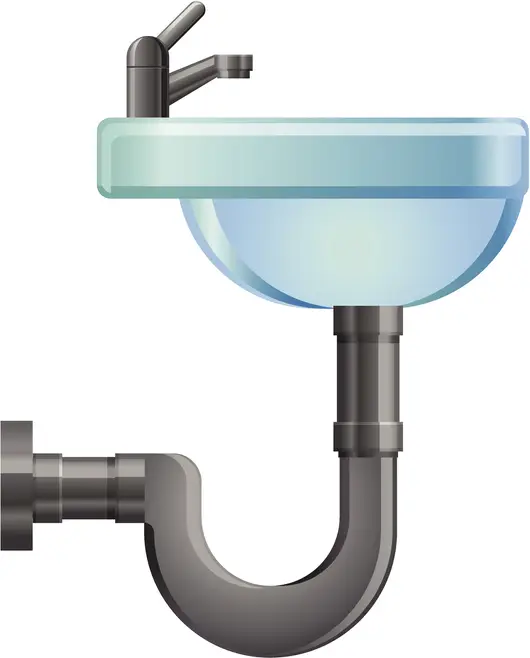If you’re not in the plumbing industry, there are lots of terms that can go over your head. The same is true in any industry that’s not necessarily a specialty, so it makes sense that you’d have questions. And we’re here to help!
A P-trap is a requirement for anywhere that an open drain line flushes wastewater into a drain-waste-vent system. P-traps create a seal that prevents odors from coming out of drains and getting into a property. They also catch any solids that go down to prevent clogs from getting into the drain or sewer line. If you’re upgrading your home, many sinks and bathroom features will use these.
How P-Traps Work
Looking under your sink, it’s common to see a bend in the pipe right below the drain. Water travels from the drain through this piece into the pipe system. Some describe the shape to be more of a U. But the U-shape part connects with a horizontal pipe that has an outlet through the wall. The combination of pipes forms the shape of a P that’s tipped over.

The purpose of having a bend rather than letting water flow directly down is twofold:
- The bend traps a small amount of water which prevents sewer gases from coming in, and
- It catches anything that might fall into the drain, like a piece of jewelry.
If you smell something foul from your sink, shine some light into the drain to see if there’s water down there. When there’s no water to be seen, it’s due to lack of use evaporating the water (which is easily solved by running the tap), or from an underlying leak.
15 Kinds of Traps Plumbers Use
Though P-traps are very common, there are several other types of traps that plumbers regularly use. All traps share the same core function, which is to hold a certain amount of water that creates a seal to stop gases from entering the property. That means every time you use a fixture, you’re flushing the water within the trap seal to replace it with new water.
With a design meant to support self-scouring, traps need water to flow at the proper velocity. If water flows too fast, it won’t stay in the trap to seal out odors. If it’s too slow, it’s easier for solid particles to settle into the bottom of the trap.
Other traps that you might hear of include:
Floor Trap
Also called a Nahani Trap, these are used to collect water from the bathroom or kitchen floor. They have a grate attached to the top of the trap which prevents debris from entering and blocking traps.
Gully Trap
Often shortened to G.T., these remain outside of a property to connect with the external sewage line. G.T.'s collect wastewater from sinks, showers, and tubs.
Q-Trap
With a function like P-traps, these are meant for properties with multiple floors that have bathrooms.
S-Trap
Unlike P-traps which connect to pipes that have a wall outlet, S-traps lead to an outlet through the floor.
Bottle Trap
When spaces are small underneath sinks, bottle traps can be used since they run straight up and down. Maximizing the area available, these are also easy options to install and maintain.
Grease Trap
Restaurants, in particular, must use these. Grease traps keep heavy grease and solids from getting into the kitchen’s wastewater system.
Drum Trap
Commonly used for bathtubs, drum traps are wider and make for a more efficient clearing of clogs.
Running Trap
Mostly used in public restrooms, running traps serve many sinks in a row. Yet they can also function as an option for dishwashers and laundry machines.
Straight-Through Trap
While these are useful for smaller spaces, water runs more slowly through them, which makes them less effective than other traps.
Low-Level Bath Trap
An easy installation for cramped spaces beneath showers and bathtubs, these traps can get clogged but are still quite reliable in homes.
Bell Trap
While not as useful as other traps, bell traps function for outdoor plumbing applications, such as an outhouse, garage, or patio.
Building Trap
More heavy-duty than other traps, these run from a building’s drain to the sewer, having a trap in the center with a vent that leads outside.
Silt Trap
Silt traps separate sand and other coarse particles from the wastewater before releasing the water into the drainage system.
Intercepting Trap
With a deeper seal than other traps, these disconnect building drains from street sewers.
If you’re having problems with a trap in your plumbing system, we’re here to help! Call with any questions.

